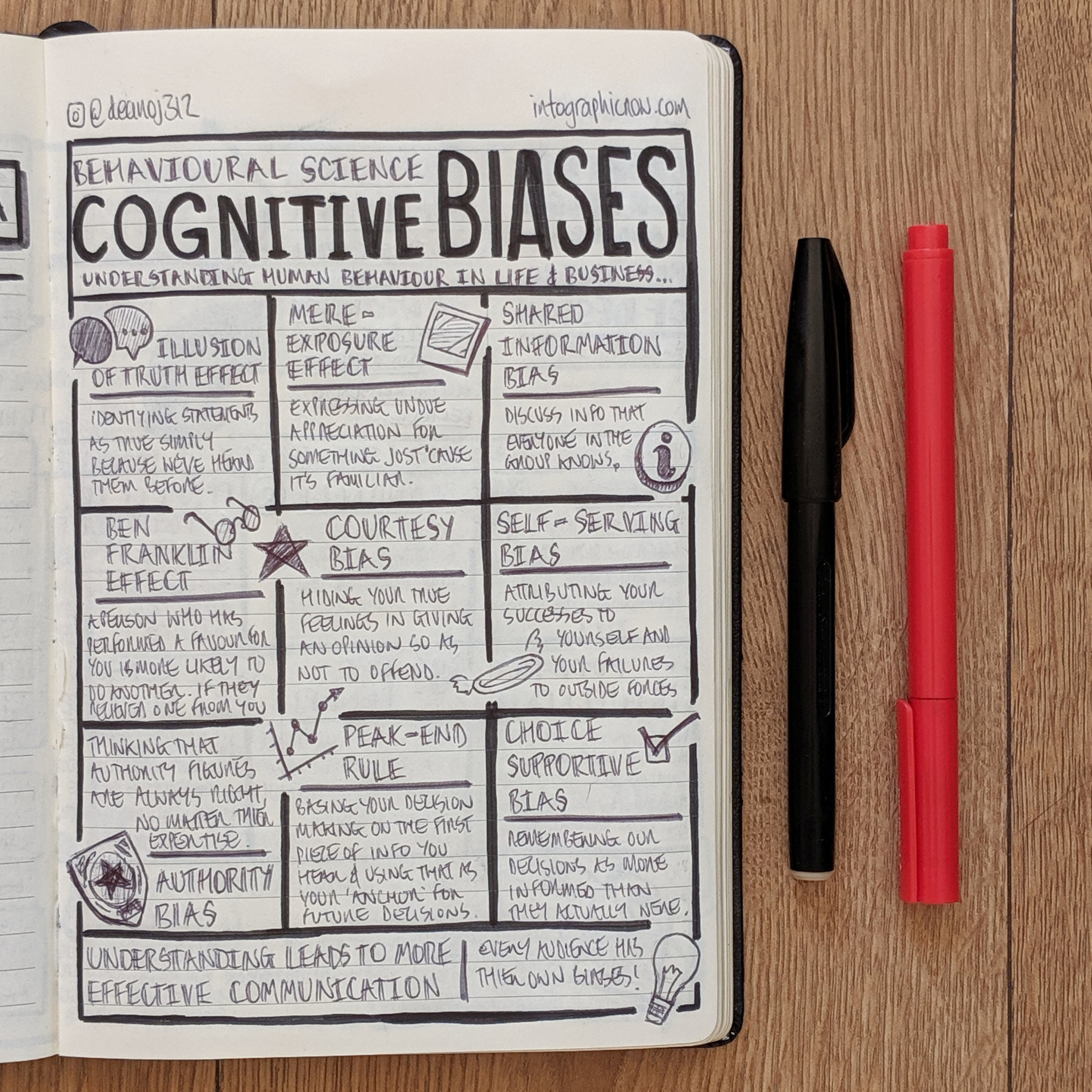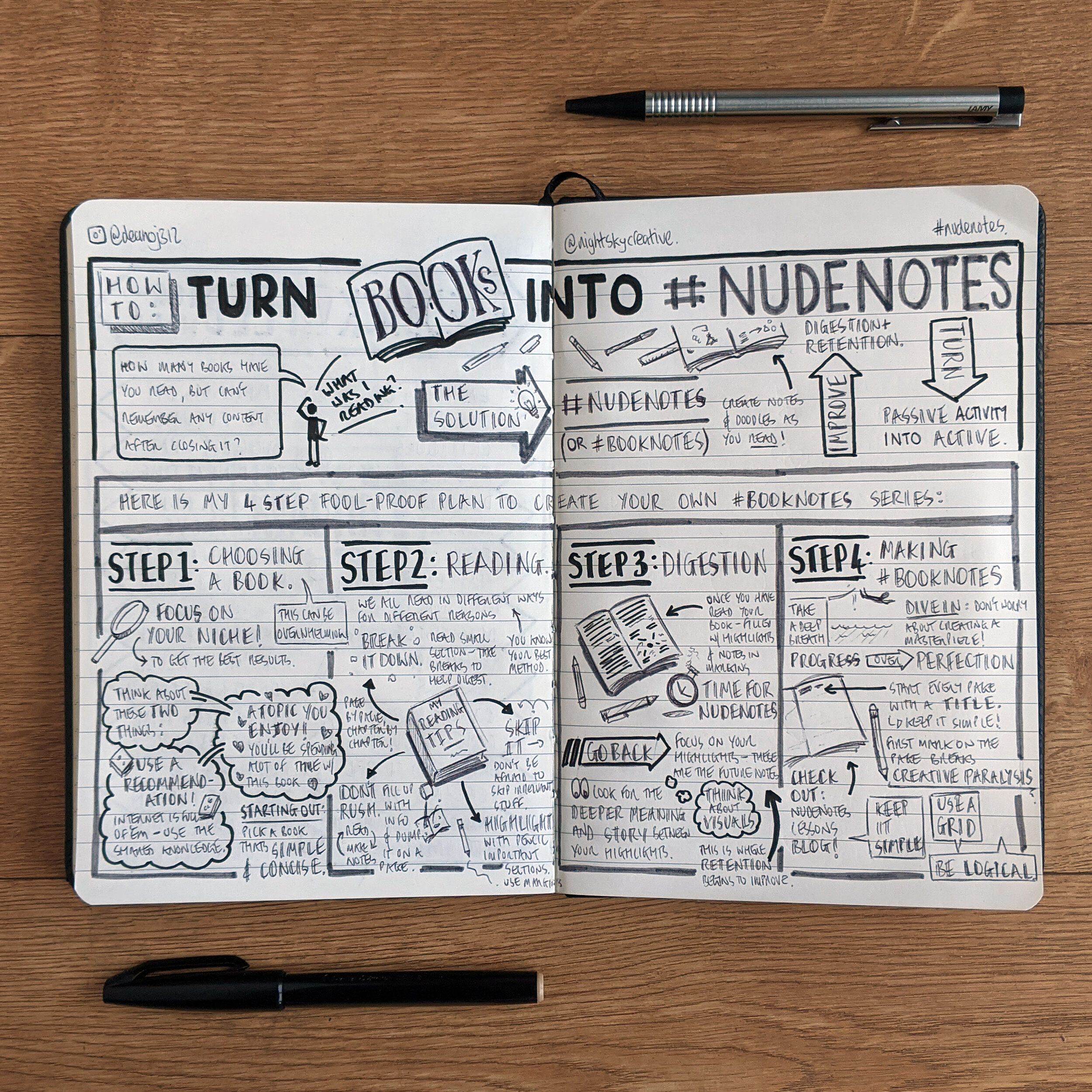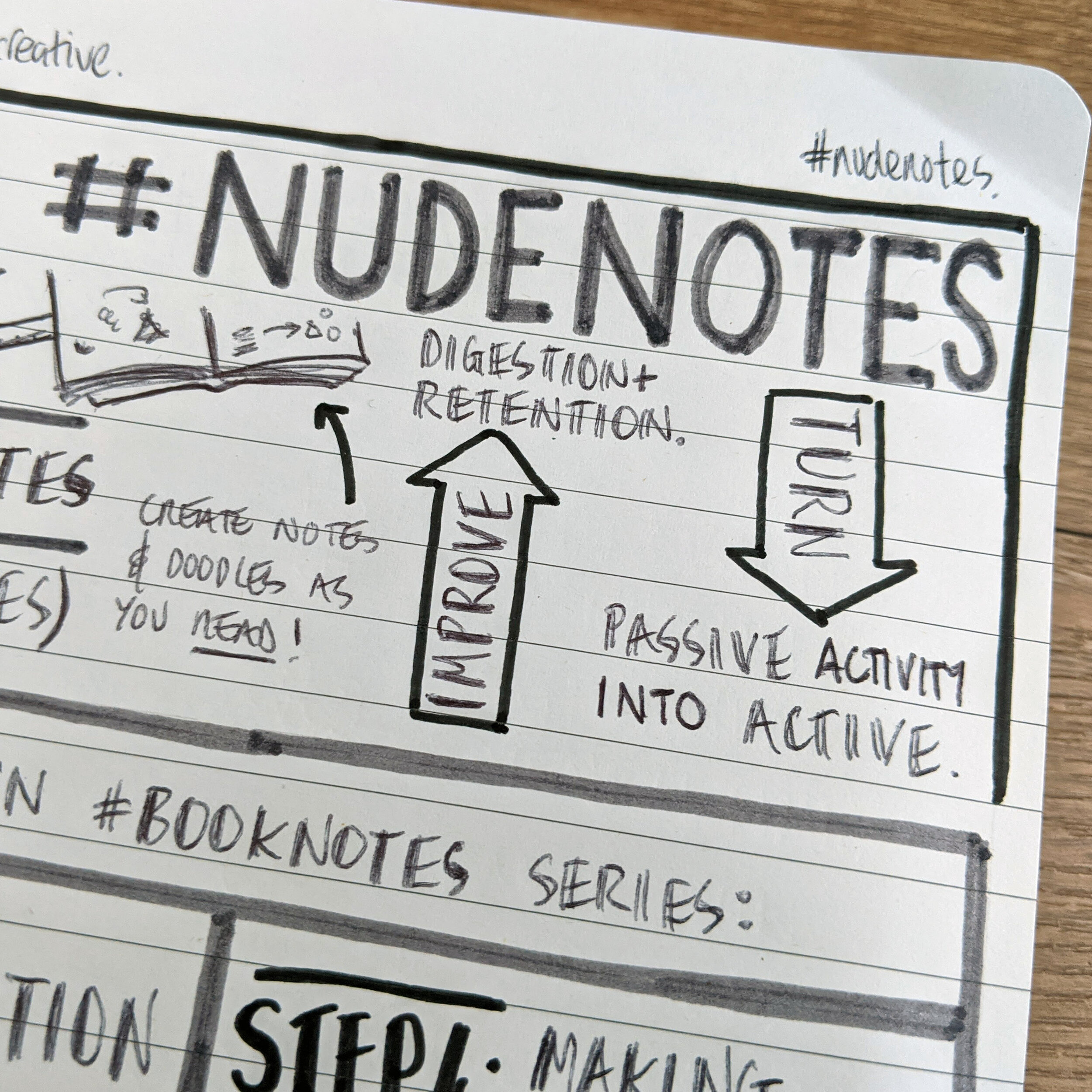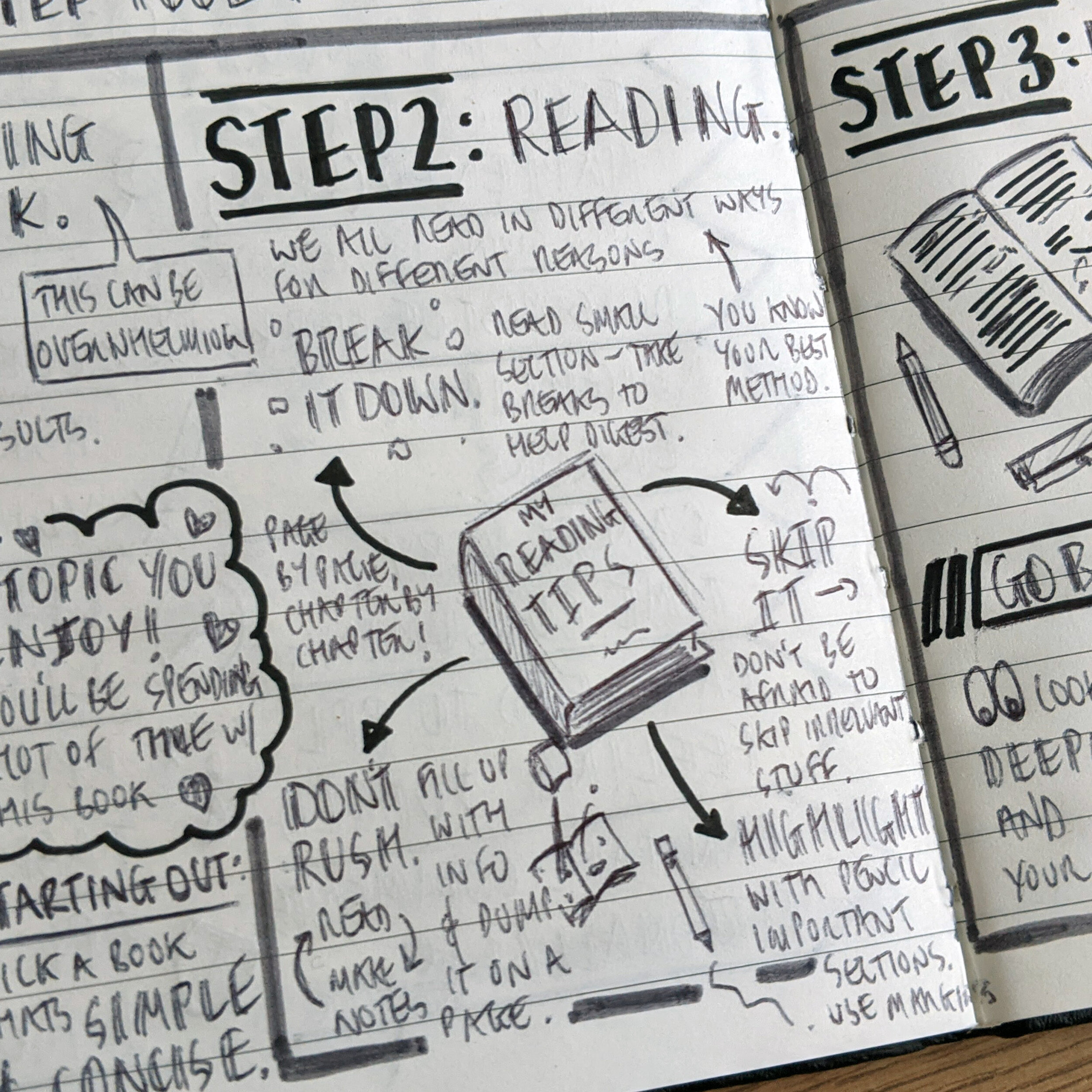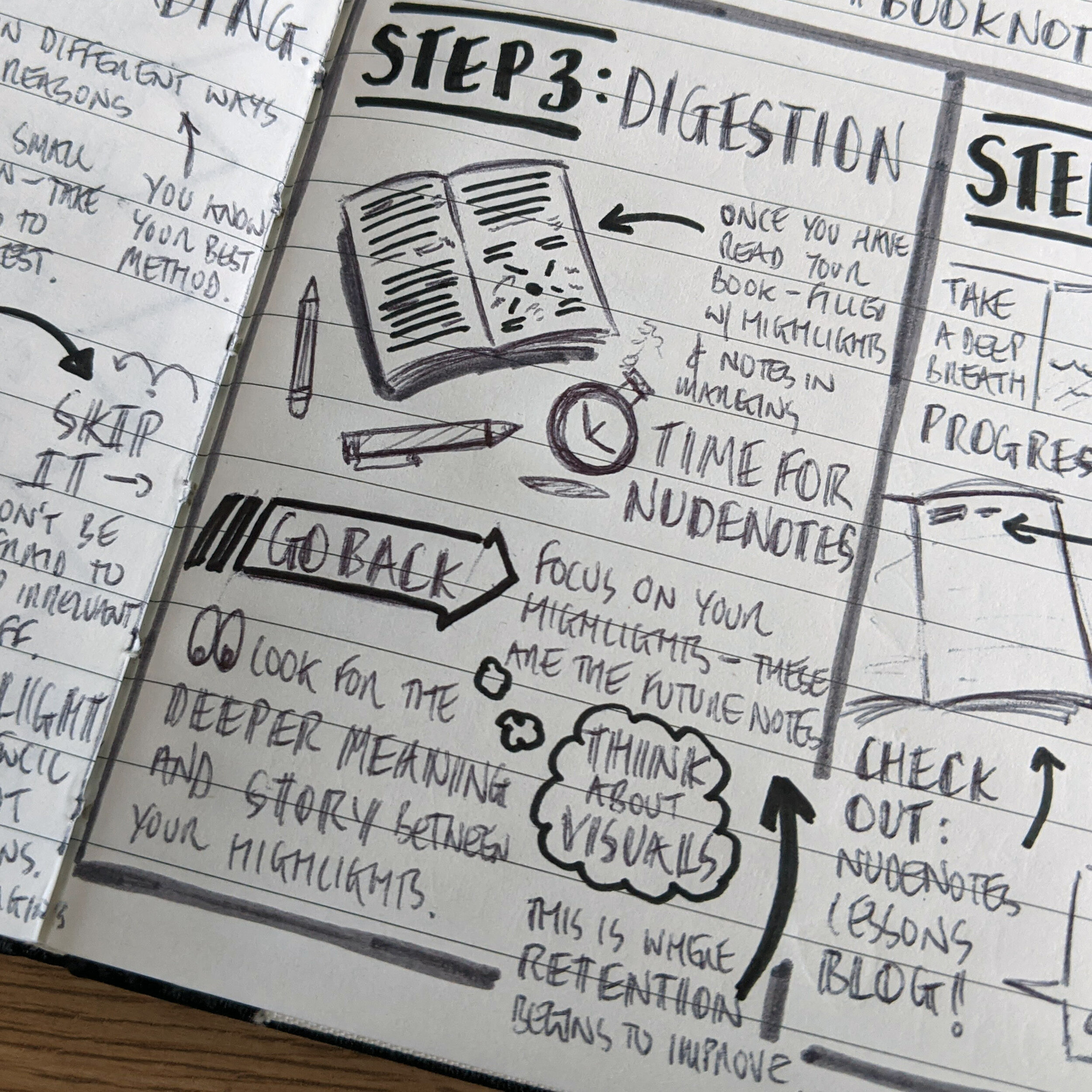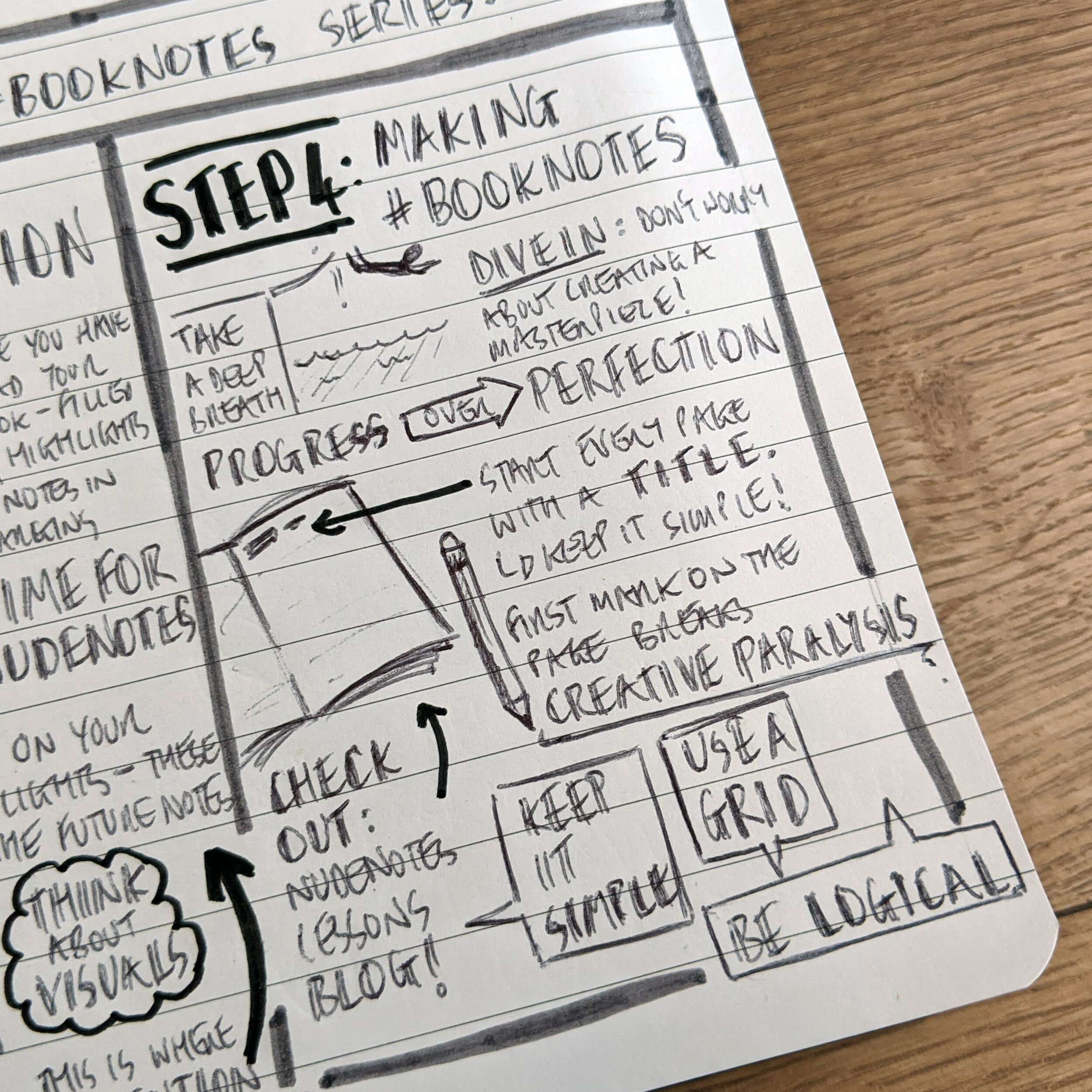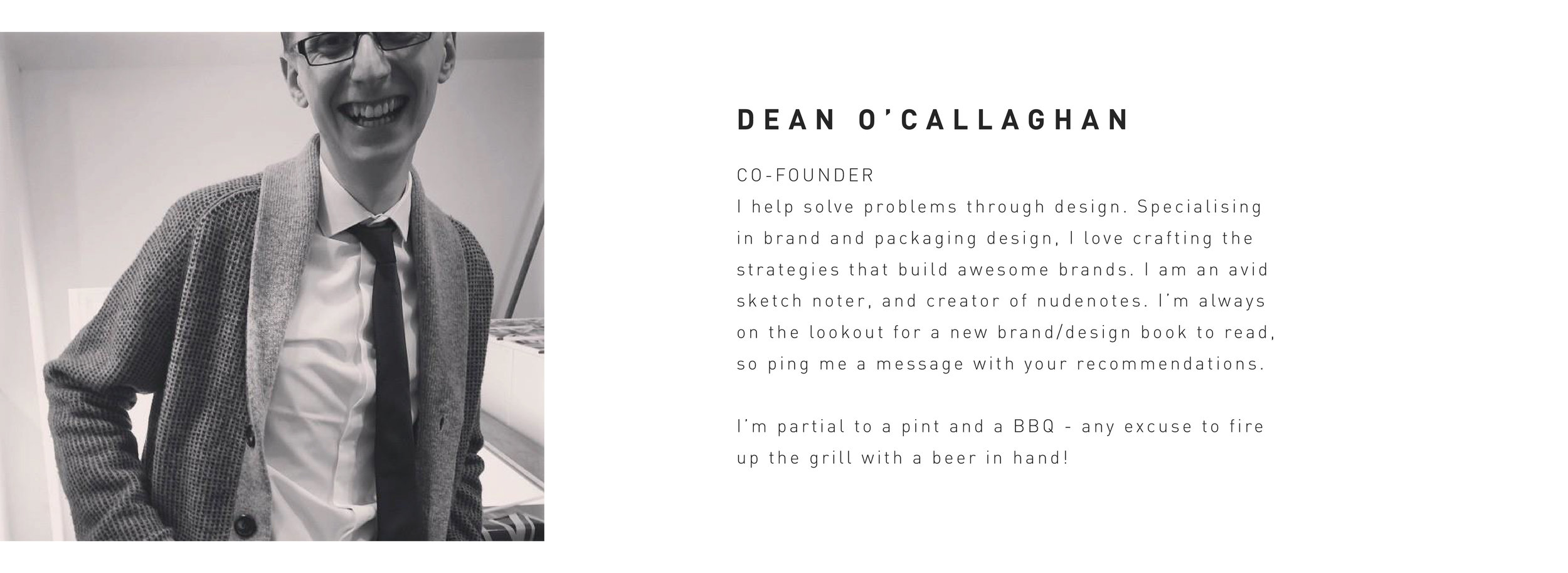How to Turn Books into Nudenotes
Image courtesy of @nicolehoneywill via Unsplash.
Have you read countless books about business, design, marketing, branding, or anything else, but find it difficult to remember the content after reading it?
I feel you.
And I have a solution.
#nudenotes!
For those of you following me on Instagram, you will have seen the nudenotes series that I call #booknotes, based on some of the books I’ve been reading.
In this article, I’ll give you some tips and tricks I have learned from doing my own notes.
My hope is that this will inspire more people to use booknotes to improve your information digestion and retention.
If you haven’t already, I suggest you read my other article, nudenotes 101, which covers the basic mindsets and process of making nudenotes.
Image courtesy of @christinhumephoto via Unsplash.
Step One: Choosing a Book
There are hundreds of books to choose from out there, and it can get overwhelming.
Try to focus your niche down to a specific area to get the best results.
Here are some key points to consider during this process:
Pick a topic that you enjoy. This is probably the most important point to consider when choosing a book. Creating booknotes takes time, you will be spending a lot of time with that material, so you need to love it!
Use book recommendation lists, the internet is full of them. Check out our book recommendation lists here. For all you creative professionals out there, check out The Futur’s book list – it’s where I get a lot of my booknote ideas, and covers a range of topics around the business of design.
Just starting out? Pick a book that is simple and concise. You can’t really do this over the internet, so I suggest you go to a bookstore and have a flick through some options. The less ‘fluff’ in the book, the less work you have to do in order to pull out all the insights. Textbooks are really good for this, although they can be quite dry.
Image courtesy of @priscilladupreez via Unsplash.
Step Two: Reading
Everyone reads in different ways and for different reasons.
I’m not here to tell you how to read, only you know your best reading method.
But I’ll share some of my hints and tips that I find work for me, and you’re welcome to try them out.
There are many ways of taking what you read and converting them into booknotes.
However, it can quickly get overwhelming – when you open that new book, flicking through the pages to realise there are 200 pages in the book!
It’s enough to make you put the book down.
Don’t give up yet!
Just like with any big project, you just need to break it down into manageable chunks.
Take it each page at a time.
Remember, these notes are being made by you and for you.
If you come to a part of the book that you don’t like or is not relevant, just skip it – no-one can force you to read it!
However, if you’re doing this, it can be worth reading ahead to double-check that part of the book that you skipped doesn’t become more relevant later on.
It’s important to read at whatever pace is comfortable for you – don’t rush through it, and don’t read so much information that you can’t take it in.
When it feels like there’s too much going on in your head, it’s time to start making some notes.
Empty all that information you have just read on to the page in note form.
Then you’ll be ready to take more information in, safe in the knowledge that you have a record of what you’re learning.
This process is ideal for people with short attention spans, or who find it hard to retain information, or even those who like to see results quickly.
Alternatively, if you find it difficult to get into the flow of reading and don’t want to adopt the ‘start and stop’ method, you can read for long periods and just highlight sections or make pencil prompts in the book margins.
Then, once you have finished your reading session, you can flick back through the book using these prompts to build your booknotes.
Highlighting relevant parts as you read can also help jump-start your note-making process – I recently started highlighting parts by underlining them with a pencil, and if I think or an illustration, or additional notes that could work with that part I, doodle it in the margins.
Image courtesy of @joannakosinska via Unsplash.
Step Three: Digesting
Okay, so now you have read the book, highlighted passages that interest you and maybe you have some rough illustration ideas doodled in the margins.
Now it’s time to start thinking about making some nudenotes.
Go back through the book focusing only on your highlighted parts – these will form the main structure of your nudenotes.
During this second read-through, you may start to discover something you missed the first time around.
Look for the deeper meaning in what you have highlighted, and what kind of visuals they bring into your mind's eye.
Using these visuals in you notes will help you create notes that resonate with you more, improving your memory of the content.
Image courtesy of @aaronburden via Unsplash.
Step Four: Making the #booknotes
This is when you will probably get creative paralysis – staring down at a blank page, not knowing where to make the first mark.
Stop right there.
Take a deep breath.
Don’t put unnecessary pressure on yourself to create the perfect note-taking masterpiece.
What’s more important is that you create notes that inspire and help you move forward.
Trust the process.
Take another deep breath – we’re diving in.
Every page of booknotes starts with a title, and if you’re planning to make more than one page of notes, a part number.
Extra tip : when making a title lock-up, keep it simple.
There you have it - your first marks on the page!
Not so daunting now, is it?
You may have to do this a few times.
For example, in my booknotes series on Douglas Davis book Creative Strategy and the Business of Design, it spanned over 25 parts, which meant I had to recreate the title 25 times.
This is when keeping it simple works in your favour, think about ways you can simplify to amplify.
When creating booknotes, I’ve found that the layout of the page dramatically affects your ability to fill the page in a coherent and logical way.
There are two ways to think about layout in booknotes:
Grid layout
This is when you draw out a simple grid in pencil and map your notes into it, neatly organising your information. Then, once you have finished your notes in pen and when the ink is dry (I find it best to leave it at least a day), you simply erase all the pencil marks. This method is really simple, and great for beginners – Tassia, our Marketing Lead, is starting out with this method, a nudenote newbie:
Story layout
This is a little more advanced, taking more planning and experience, but the results can be visually impressive. To achieve this, you need to discover a deeper theme or narrative behind you notes and design a layout that matches this. Here are some examples of this in my own booknotes:
As with all my blog articles here are my nudenotes I created in preparation for writing this blog article:
That’s all folks – this is my four-step process for creating visually-stunning, information-retaining booknotes.
I hope this has inspired you to pick up a pen and a book and start creating!
For more handy tips for creating notes, check out my other blog article nudenotes 101.
If you have any questions about creating your booknotes, or any ideas on which books you’re going to create booknotes for, leave us a comment below, or you can contact me directly through my Instagram @deanoj312.
I look forward to seeing your booknotes – happy nudenoting!






